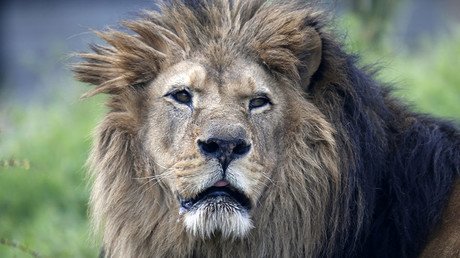Feral cats vs. wild birds: Animal lovers to face off in federal court

Self-preservation may be the first law of nature, but some animal lovers are resorting to federal law, filing a lawsuit over a New York state park’s policy, pitting defenders of piping plovers against protectors of feral cats.
For many years, Jones Beach State Park has hosted both wild birds and free roaming cats. This has created tension between local bird and cat lovers seeking to look out for the respective interests of their favorite animals.
The conflict is culminating this month as avian enthusiasts under the banner of the American Bird Conservancy have made a gambit to champion their species by bringing a federal lawsuit against New York’s parks commissioner, Rose Harvey.
Harvey, they claim, is violating the Endangered Species Act by not sufficiently looking out for the little chirpers – in particular the piping plover, which has been designated as “threatened” for more than 30 years. State law categorizes them as “endangered.”
The lawsuit alleges that the park’s lenient policy towards stray cats poses a mortal danger to the little birds. Volunteers have constructed dozens of makeshift shelters using tarp and cinder blocks on one side of the sand to accommodate the feral kitties, creating a “likelihood of injury” to the shorebirds, the lawsuit claims.
“This is a natural nesting habitat for piping plovers, and unfortunately it has been invaded by introduced predators,” Grant Sizemore, director of the American Bird Conservancy’s invasive species program, told the Washington Post.
However removing the feral “predators” would involve euthanasia, the cat people counter, fearing a feline massacre.
“They’re going to be put down,” Marion McKenna, one of the caretakers of Jones Beach’s indigent cats, told WCBS. “Why don’t you just take a machine gun and kill them all now?”
A 2013 study cited in the lawsuit, which was led by the Migratory Bird Center and US Fish and Wildlife Service, found that US cats kill an average of 2.4 billion birds and 12.3 billion mammals per year, but the cat defenders of Jones Beach claim their wild kitties would never do such a thing, because they never go hungry thanks to their efforts.
Keeping the homeless cats well fed isn’t good enough to suppress their murderous natural instinct to hunt, the bird people counter.
The good intentions of each group don’t only come into conflict at this New York state park. The practice of TNR, trap, neuter, and return, is also a matter of controversy. Feral cat lovers try to give the wild felines the best life possible out in the streets or in the sand, but admit that they are unlikely to ever be domesticated. That just leads to more trouble, skeptics say.
A 2009 report from the US Fish and Wildlife found that cats, “particularly those associated with human-subsidized feral cat colonies,” were “an increasing threat to piping plovers and other beach-nesting birds.”
The mere sight of a cat can stress out the plovers, debilitating their reproductive potential, the lawsuit claims. But again, the solution is worse than the problem, according to the cat supporters.
Cat & mouse game, too the extreme: Artist creates mini armor for furry friends https://t.co/iEFdHaZQSLpic.twitter.com/XP2suI7lB1
— RT America (@RT_America) January 29, 2016
“We just can’t bring these cats somewhere else,” Stephanie Capuano told the New York Law Journal. She’s been caring for them since 2000 and estimates that there are only 15 left, a major decrease over the years.
As far as the tiny birds go, Anne Hecht, an endangered species biologist for the US Fish and Wildlife Service, told the Journal that their work has increased the piping plover population on the Atlantic Coast from 790 pairs in 1989 to 1,850 pairs in 2015.
Where those numbers go from here will be up to the courts, unless they decide to let nature take its course.













